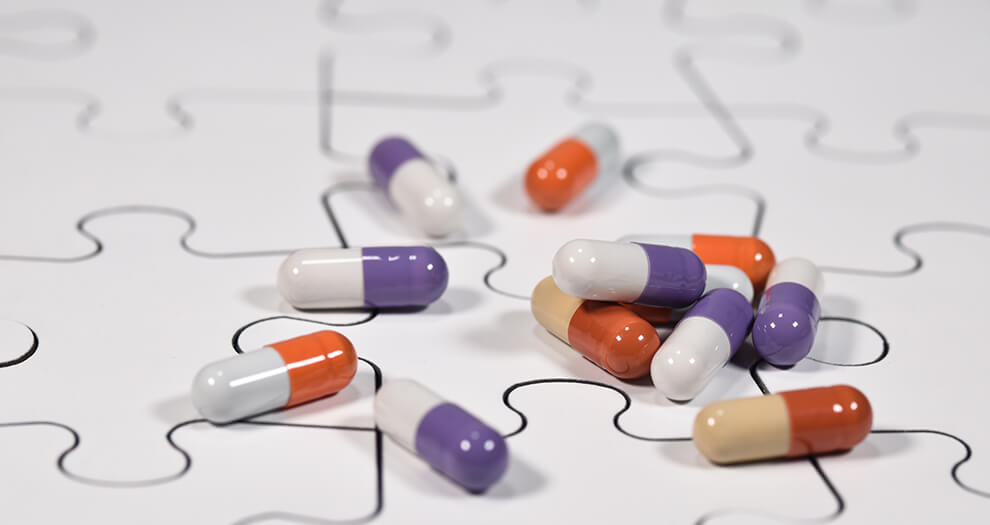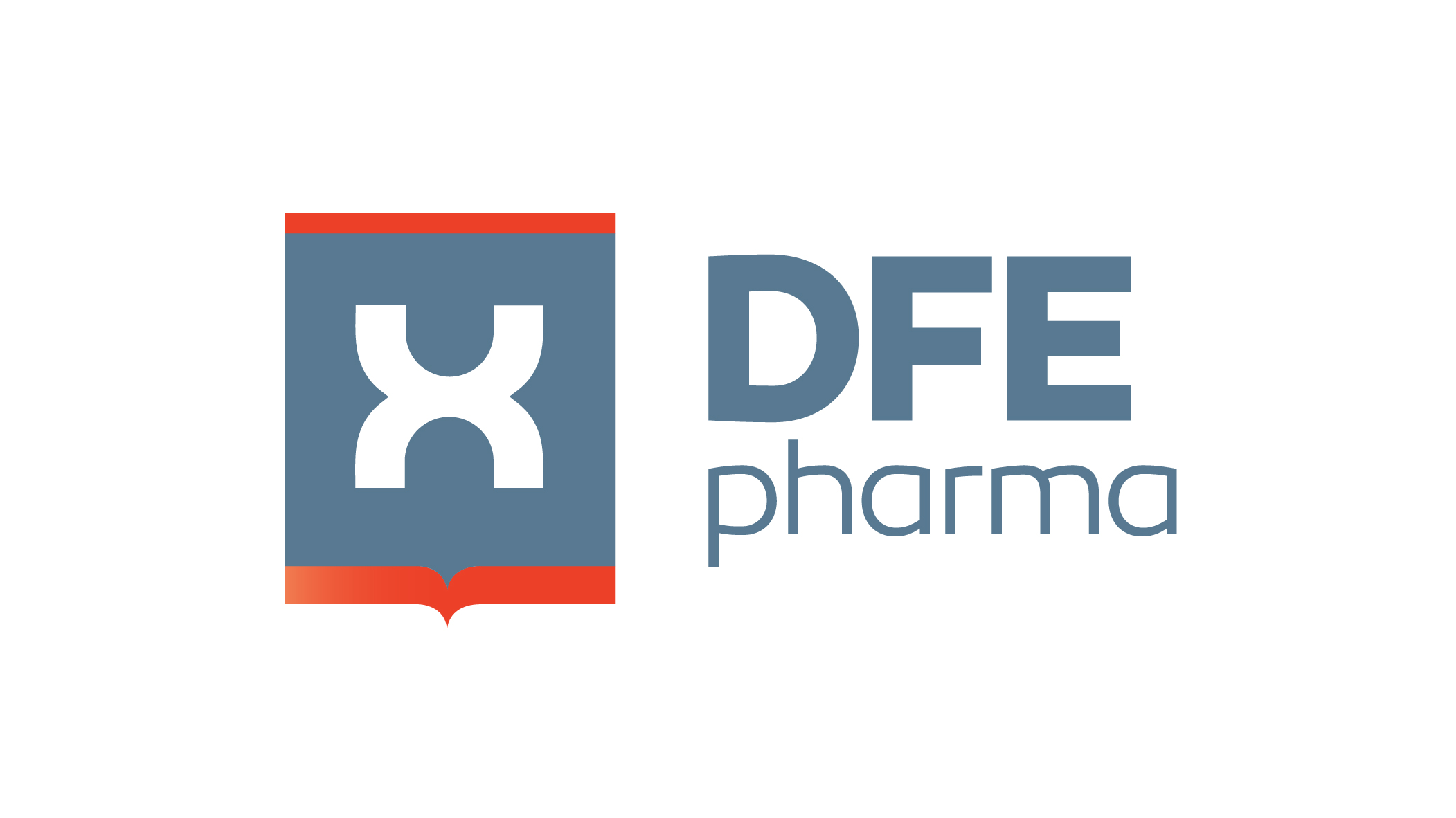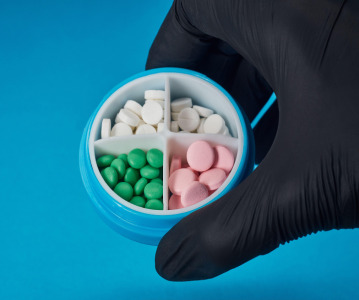Excipients – an industry adapting to change

Excipients are a crucial component of the pharmaceutical product formulation, and the industry is constantly having to adapt to changes in demand and technology innovations
One could be forgiven for believing that excipients are merely a ‘supporting act’ to the active pharmaceutical ingredients (APIs) of pharmaceutical drug products, providing the means to increase the bulk of a formulation.
However, these inert additives to formulations are actually integral components of a dosage form and largely determine its drug delivery function as well as influence key factors such as processability, performance and patient adherence and compliance.
Therefore, it is crucial that excipients are assessed for safety, quality and performance particularly as variability in their properties may well have a profound negative effect on these characteristics. With the ultimate goal of an excipient being to ensure that its ‘home’ pharmaceutical product leads to better outcomes for patients, they are essentially market driven. And that means excipients manufacturers are constantly seeking to finetune their processes to enhance product performance while minimising variability.
And the excipients industry is well aware that its pharmaceutical clients have very high expectations. In January, the industry body, the International Pharmaceutical Excipient Council (IPEC) published a new validation guide (1) to describe activities taken by excipient manufacturers to test and evaluate their systems, processes and methods in order to provide assurance that they consistently meet predetermined acceptance criteria.
“In addition, the guide attempts to address how to document the activities that are currently used by an excipient manufacturer to successfully produce excipients in a manner that meets the excipient user’s expectations,” IPEC says.
The market outlook for excipients is still very promising, despite a dent in 2020 largely due to the coronavirus pandemic. According to a recent Reportlinker study (2), the global excipients market dipped 4.62% from $6.41 billion in 2019 to $6.12 billion in 2020 amid restrictive containment measures involving social distancing, remote working, and the closure of industries and other commercial activities resulting in operational challenges. However, the report said the sector is expected to recover and reach $7.67 billion in 2023 at a CAGR of 7.84%.
Growth drivers
So, what will be the catalysts of this future growth?
According to Elham Blouet, Strategic Portfolio Manager, Pharmaceuticals at Roquette, the key drivers for growth in the excipients market follow the key drivers of pharmaceutical and nutraceutical markets growth, such as “worldwide generic growth with health access in pharma‐emerging countries and the increase in chronic diseases such as cancer, diabetes and cardiovascular diseases.”
She adds that the trend towards continuous manufacturing of pharmaceuticals as opposed to traditional batch manufacturing and the rise of ‘functional’ excipients with solubility and stability enhancement features have also contributed.
According to Evonne Brennan, Regional Technical Director, Americas at IMCD, one of the most obvious drivers is the growth in healthcare needs. She cites Type II diabetes as a prime example: “Unfortunately there are more patients and if you look at futuristic predictive trending, it is a growing area.”
She also points to the rising nutraceuticals industry, fuelled by increasing consumer focus on health and well-being, which falls under an umbrella of solid oral dosage development such as tablets and capsules – very much the domain of the excipients sector.
The benefits of improved excipients characteristics also provide an incentive to the industry, Brennan adds.
“When an excipient is displaying higher functionality through coprocessing and/or changing the process parameters to uniquely change the morphology to enhance the processability, enabling a more robust developments” she says.
Despite this list of compelling drivers, the fact remains that few new or ‘novel’ excipients are reaching the market. According to Cyrielle Jeannot, Area Market Manager Europe at Roquette, a novel excipient is defined as an excipient not previously used in any drug product for humane use for the same route of administration intended for said novel excipient.
“Therefore, the challenges of developing a novel excipient are almost the same as developing a new drug substance,” she says.
The regulatory aspect is a key challenge, says Elham Blouet: “The regulatory information should cover not only the manufacturing, control and stability, and related quality aspects, but also all the related toxicological studies showing the safety of use.”
She says that in some cases of a “novel excipient” intended for the oral route of administration, the demonstration that this substance is already used in food can support the required safety of use‐related studies.
Another point to be considered by manufacturers of novel excipients is securing the supply chain by putting in place a strong business continuity plan, Elham Blouet says: “ And finally, demonstration of the functionalities of a novel excipient as compared to existing excipients with the same functionality is a key challenge.”
Another reason for the dearth of novel excipients is the high development costs which many producers regard as prohibitive. This has led to a two-pronged approach to excipient development technology, as Bastiaan Dickhoff, Development Manager/Senior Product Application Specialist at DFE Pharma explains.
He says that while on the one hand, there is a school of thought that focuses on fine-tuning the consistency of traditional, well-known excipients, “on the other hand, various companies are looking into co-processed multifunctional excipients. What they're trying to do is see if they can combine the functionality of two or three excipients in a co-processed product rather than have all the individual ingredients.”
Implications of continuous processing
As more and more pharmaceutical companies move towards converting their manufacturing methods from batch to continuous processing, this sea-change has provoked excipient developers to re-evaluate their own products and how they can accommodate this new technology.
What are the implications for manufacturers who wish to change from continuous to batch processing?
Evonne Brennan at IMCD makes the point that these can vary on a case-by-case basis but there are some challenges such as managing components in the formulation – or how the ingredients are added to the mixing chamber.
“If you’re doing direct compression, flowability of the ingredients, shear impact, lubricant choice all need to be considered when moving directly from one to the other,” she explains. “Most excipient companies have been using continuous manufacturing for years so can help with transition.”
Cyrielle Jeannot at Roquette says excipients that can be used in continuous manufacturing need to have the functionality required for the intended intermediate, such as the granules, or for the final product.
“They also need to have been demonstrated to perform in a reproducible manner in continuous manufacturing while maintaining the required functionality and have clear and defined physical and pharmacotechnical properties intended for continuous manufacturing,” she adds.
COVID-19 impact
When it comes to the impact of the ongoing global coronavirus pandemic on the excipients sector and whether it has changed supply chain structures in any way, Bastiaan Dickhoff at DFE says that in the first half of the year amid the first peak of the epidemic, many pharma companies were ordering extra volumes.
“I think for the reliable suppliers who are completely backwards integrated, from the supply chain there were, there are no issues,” he says. “I think the biggest challenge in October and November during the second peak, was having enough containers to ship around the world because basically there were not enough exports from China so there were no empty containers to go back to Asia.”
Cyrielle Jeannot at Roquette says demand increased significantly for excipients to be used in COVID-19 vaccine formulations – such as lipids-based excipients used in nanoparticles technologies -- as well as existing medicines repurposed to treat the disease.
“Supply chain security is the most critical part, mainly when excipients are outsourced from another country or another region,” she adds. “This in turn has pushed the pharmaceutical companies to put in place a risk mitigation plan to secure the supply of critical excipients.”
As the world adjusts to the new reality of the need for sustained management of a global pandemic, the future of the excipients market will to a large extent track the emerging trends within the pharmaceutical industry. Mara van Haandel, Innovation Manager at DFE Pharma says that future changes in manufacturing and the introduction of new technologies such as continuous manufacturing and 3D printing will inevitably place new demands on excipients manufacturers in terms of providing new functionalities.
She points out that more personalised medicines and a new ‘patient-oriented’ approach will be key as future treatments are much more likely to be targeted for smaller patient populations.
“And of course, continuous manufacturing is one of the solutions to have a more flexible line and produce just what is needed or even produce ‘on demand’ rather than making one big batch and then being unable to sell all the product you make,” she says. “CM is already a step towards high value low volume products.”
Brennan at IMCD stresses that after the many developments in processing, innovation remains at the heart of the excipients sector but warns that true to the nature of a risk averse industry, future success will not happen overnight.
“It’s about the innovators and formulators’ ability to work with novel excipients, feeding information back in, assessing gaps depending on the science being pursued. It’s also about excipients manufacturers’ investment in broadening their portfolio, and looking at whether there could be more synergies,” she says. “With this investment by companies, the regulatory environment needs to be open enough to adapt focussing on the science and avoiding delays. And the question is ‘how do we manage that?’”
References:
1. https://www.ipec-europe.org/guidelines.html



Related News
-
News Pharmapack Awards 2024 Patient-Centric Design Award Winner – Dr Ferrer BioPharma
The 2024 Pharmapack Awards celebrated the best in innovation and design for the pharmaceutical packaging and drug delivery industry on January 24, 2024. -
News Pharmapack Awards 2024 - Celebrating Packaging and Drug Delivery Innovation
The 2024 Pharmapack Innovation Awards ceremony celebrated the best in pharmaceutical packaging and drug delivery innovation at all levels. The awards were held on January 24, 2024 at the Paris Expo Porte de Versailles. -
News Women in Pharma: Looking back on 2023 and moving forward to 2024
In this monthly series, we interview women from across the pharmaceutical industry and supply chain to discuss the importance of gender diversity in healthcare, the workplace, and beyond. -
News On track at CPHI Barcelona - The Track Sponsor interview: USP
In our packed out content sessions at CPHI Barcelona this year we focus on some of the hottest topics coming up in the pharma industry, with each track sponsored by a leading expert in the field. -
News Women in Pharma: Marketing for the other half in healthcare
In our new monthly series, we interview women from across the pharmaceutical industry and supply chain to discuss the importance of gender diversity in healthcare, the workplace, and beyond. This instalment highlights not only the importance of ma... -
News Bringing the pharmaceutical supply chain closer to home
The pharmaceutical supply chain has encountered numerous disruptions in the last few years, impacting procurement, manufacturing, packaging, and distribution operations within the pharmaceutical industry. Read about the rise in calls for near/resh... -
News Delivering on mRNA-based therapeutics: innovations in applications and packaging
Since the onset of the COVID-19 pandemic, the innovative potential of mRNA vaccines and therapeutics has raised questions regarding their manufacturing, packaging, and storage/transportation. Learn about how the pharmaceutical supply chain is meet... -
News Your Prescription for Marketing Success: Digital Pharma Marketing Toolkit – Free eBook
Download your FREE pharma marketing eBook to learn why it is so important for pharmaceutical marketeers to develop their digital content marketing strategies in order to establish their companies as thought leaders and industry experts.
Position your company at the heart of the global Pharma industry with a CPHI Online membership
-
Your products and solutions visible to thousands of visitors within the largest Pharma marketplace
-
Generate high-quality, engaged leads for your business, all year round
-
Promote your business as the industry’s thought-leader by hosting your reports, brochures and videos within your profile
-
Your company’s profile boosted at all participating CPHI events
-
An easy-to-use platform with a detailed dashboard showing your leads and performance







